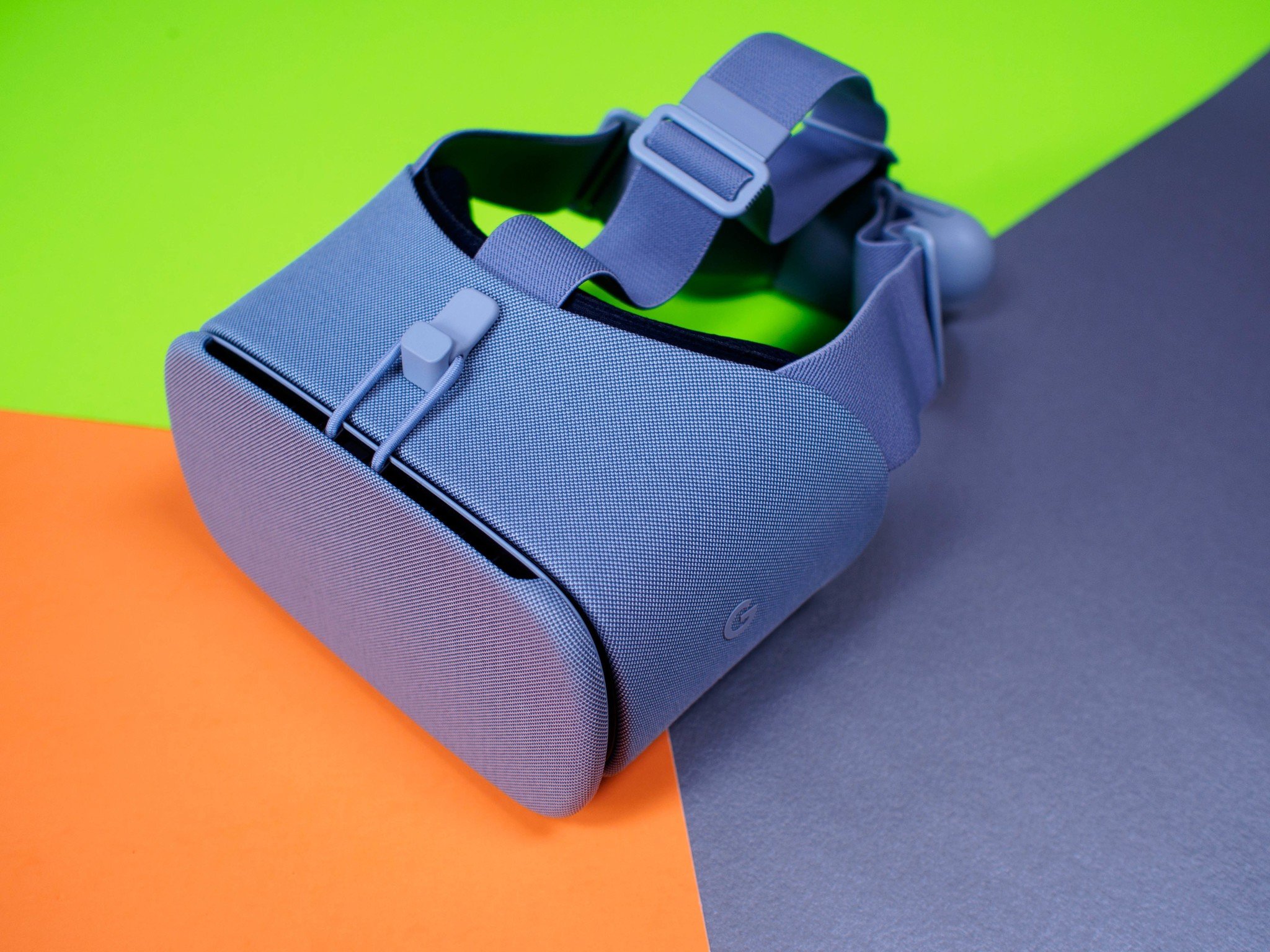Alongside the Pixel 2 and Pixel 2 XL, Google refreshed its VR headset to line up with the rest of the new products. At first glance, you could be forgiven for not noticing the many small changes which make this headset stand out. By design, it looks and feels nearly identical to the original Daydream View headset. It works in the same basic way as well, which is good news for people who aren't ready to upgrade their phone but want the latest VR headset.
What makes this headset so special? It comes down to four big changes you can see and several others you have to feel to appreciate.
About this review
I am writing this review after five days with the new Daydream View headset, adding up to 22 hours of actual use. This "Fog" variant of the Daydream View headset, as well as the Pixel 2 and Pixel 2 XL used for most of the testing, were provided by Google for review. During the review period, a Pixel XL, Galaxy Note 8, and Moto Z Force were also used in the headset.
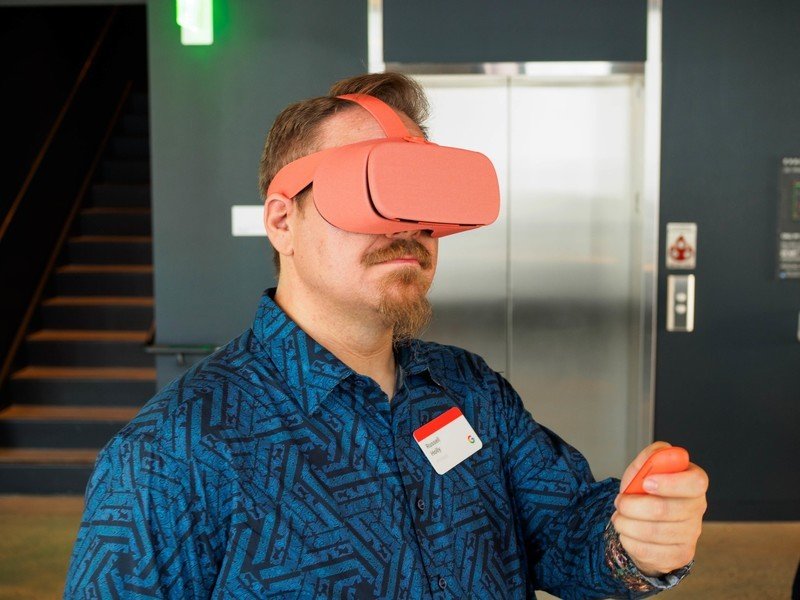
Tweaks tweaks and more tweaks
Daydream View Hardware
If Google's original goal for Daydream was to explore a higher quality form of VR everyone could enjoy with their phones, it's clear the next phase of this plan is to encourage users to stay in the headset longer. The refresh to Daydream View is entirely focused on making it easier for people to enjoy Daydream longer, and it's working. Each of the small changes made to this headset make it much easier to enjoy VR where you are, and in most cases stick around in VR for longer.
New materials

One of the things setting Daydream View apart from others with the original release was the use of fabric for nearly every part of the headset. The new Daydream View still uses fabric almost everywhere, but Google has swapped out the sweatpants-like material for a more durable-feeling stitch. This is the same unique material Google is using on many of its new PIxel 2 cases, as well as the Google Home Mini. It's just as flexible as the original Daydream, but seems far less likely to fray or stain over time.
Get the latest news from Android Central, your trusted companion in the world of Android
The inside of Daydream View is the same plush material from the previous generation, but reshaped to better fit your face. It still handles prescription glasses great, but the tighter fit means far less light is coming in from behind you to distract from the virtual environment you're playing in. It's a massive improvement over the original, especially if you are prone to headaches when exposed to rapid multi-focal situations like glare on your lenses.
One other small detail worth mentioning — the pull tab on the front of the headset is no longer made of fabric. This little tab is designed to help lock a phone into place when you are trying to enter daydream, and the new rubbery material makes it easier to find when wearing the headset and much easier to grip. It's a small change, but for the sake of comfort will likely make a big difference for many.
Bigger, better lenses
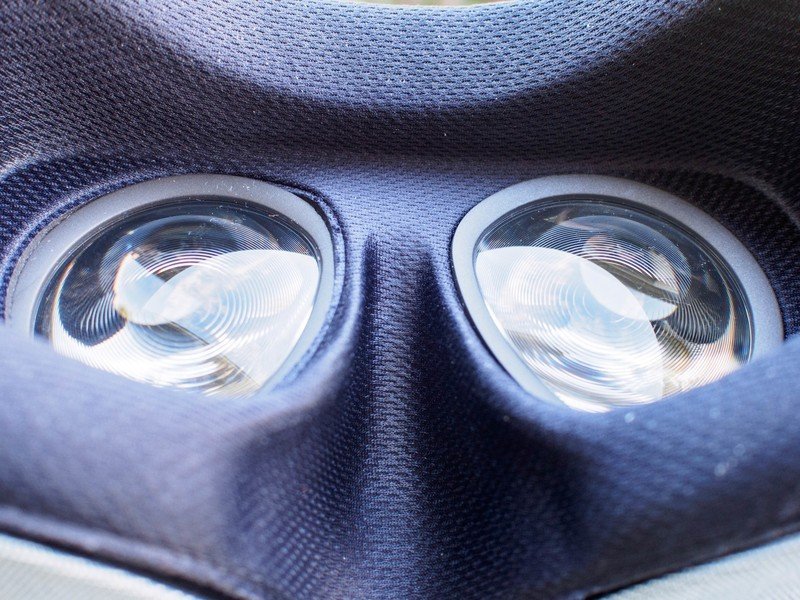
Without a doubt, the most important change made to Daydream View is its lenses. Google has ditched the small lenses from the Google Cardboard days and upgraded to a pair of hybrid Fresnel lenses. The design is noticeable at an angle, when you see strange circles inside the lenses on the headset. These lenses offer a noticeably wider field of view, which means you get more of the VR world for your eyes to soak. In games, it will mean less turning back and forth to see objectives, and in videos it will mean you can lean back and really soak in the view.
Fresnel lenses have a downside, and Daydream View is not immune to this. Where the original, smaller lenses offered a crisp viewing experience through the entire lens, these wider fresnel lenses will tend to blur a bit around this edges of your field of view. In games and movies this won't be particularly noticeable, but text in your periphery will be either too blurry to read or feature slight chromatic aberration that looks almost like there's a separate set of text in a different color just beside the white text.
The compromise here is undeniable, but welcomed for the noticeably superior field of view. These lenses are also a great deal easier to deal with when fitting the headset to your face. There's no "sweet spot" where everything is perfect, the wider lens ensures many different viewing positions are possible.
Passive heat-sink
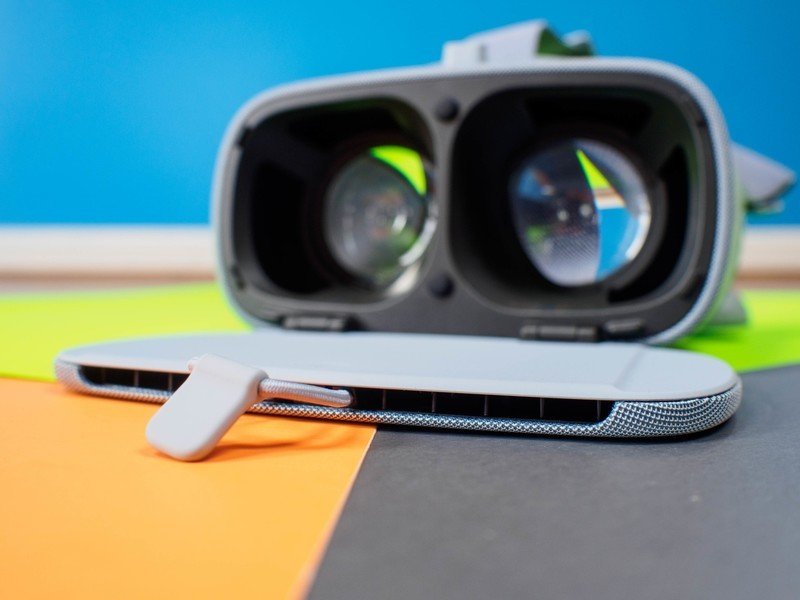
Unfortunately, your Daydream Controller no longer tucks away inside the front flap. Instead, there's a new safety strap on the back of the headset for it, and it really does do a great job keeping the controller secure and in place. The same can not be said of the side strap Samsung includes in the Gear VR kit with its controller, so it's great to see Google making sure this was a priority.
This change may seem like a bummer at first, but it really is the best possible option. The space where that little indent used to be is now the home of a passive heat-sink, designed to whisk away any heat from the outside of your phone. According to Google, this lets people stay in VR longer when overheating becomes a problem.
Having been previously using Daydream with a Pixel XL and Note 8, heat management already wasn't a problem for me. However, when testing several phones in Daydream in direct sunlight, it was clear the phones were running cooler. That means they are also performing better, which is appreciated. Unfortunately, this heatsink does not work on your face, so heat can still be a problem there.
One size fits more
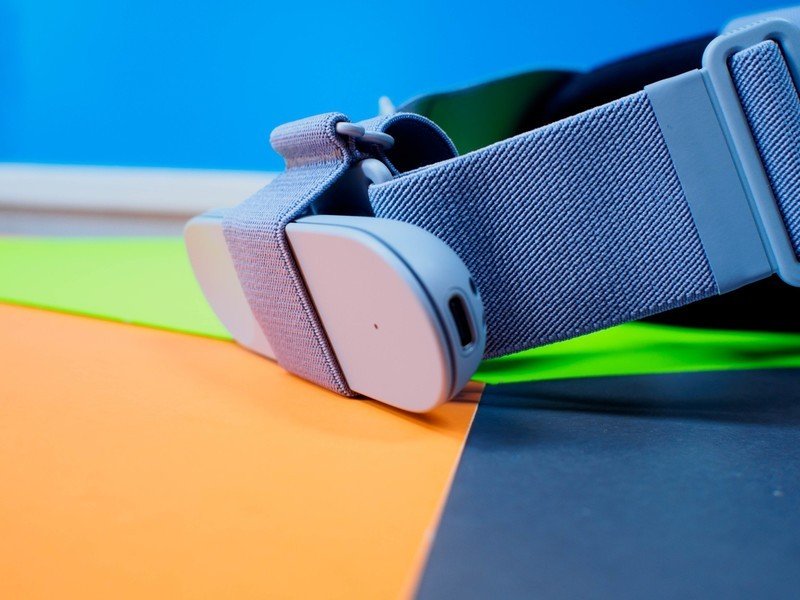
New Daydream View has a top strap, which helps distribute weight a bit and makes the whole headset feel lighter on your face. This strap is easily removed if you prefer the original form factor Google designed with Daydream, and with exception to the side straps having a new middle piece to connect them the design is the same. There are two adjustment pieces, and to fit the headset to your head all you need to do is squeeze and pull. It's the same simple design, and the strap material is just as sturdy as the original headset.
You will also find this headset design fits more people with smaller heads. Google is quick to point out that does not mean the headset is child-appropriate, and in fact still recommends you be above age 13 to use Daydream, but if you are of smaller stature this headset will absolutely fit you better. For those of us with larger heads, that's a bit of a downside. The side straps are slightly smaller than its predecessor, and that means people with larger heads may feel pressure across the eyebrows that was not there on the original Daydream headset.
Overall the straps are an upgrade, but if the goal is making the headset wearable for longer stretches of time, Google missed the mark a bit for those with larger heads. On average, I found myself needing to adjust the position of the headset after about 20 minutes of use due to discomfort. I never felt the need to remove the headset entirely, and Google's new lenses makes it easier to adjust the headset without losing that focal spot, but it did make long-term use less convenient for my giant skull.
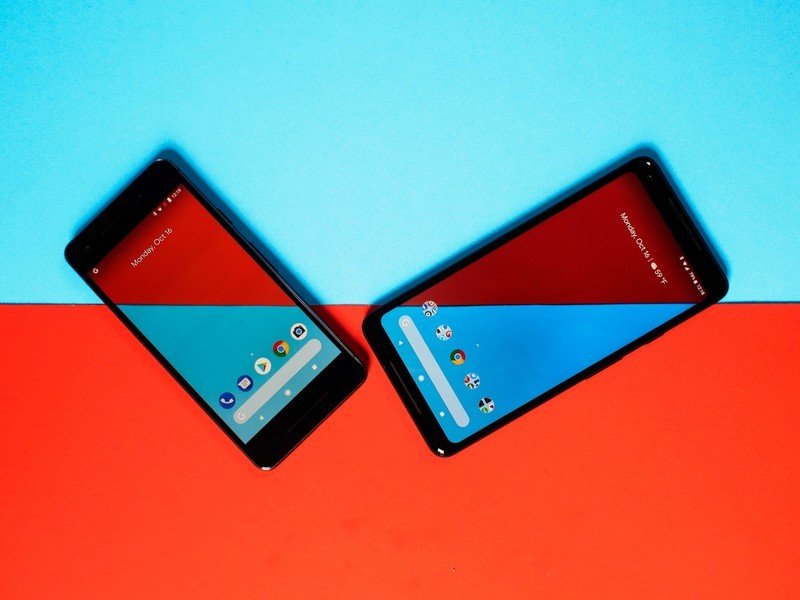
You guessed it, the big one is better
Daydream View Pixel 2 vs Pixel 2 XL
While not the focus of this review, it's appropriate to add in a quick note here on how the phones Google built specifically for Daydream and ARCore perform in this headset. Google's VP of VR made it clear the Pixel 2 and Pixel 2 XL are both purpose-built for VR experiences, just like the original Pixel and Pixel XL. Both have advanced motion sensors and fantastic displays to ensure the best possible experience when in Daydream, with similar expectations on battery drain despite the difference in display size and resolution.
For obvious reasons the Pixel 2 XL is the phone you want for the absolute best Daydream experience.
And for the most part, this is largely true. The Pixel 2 and Pixel 2 XL are the best phones you can use in Daydream right now. The displays are rich and vibrant, the battery drain is minimal by comparison, and since both phones have front-firing stereo speakers it is possible to enjoy spatial audio experiences without headphones. Which is great, because there's no headphone jack on this phone to headphones for Daydream becomes a little more work than it used to. All told, if you're already a fan of Daydream and you are getting a Pixel 2 or Pixel 2 XL, get ready to enjoy a solid upgrade.
That having been said, for obvious reasons the Pixel 2 XL is the phone you want for the absolute best Daydream experience. The display not only looks great, its 538ppi display makes the whole "screen door effect" thing you see so often with phone-based VR disappear. There's a little grain you may notice with text, but far from the grid lines from the days of Google Cardboard. If you're eager to get the best out of VR and you're on the fence about which Pixel 2 is the one for you, the bigger one will absolutely be better.
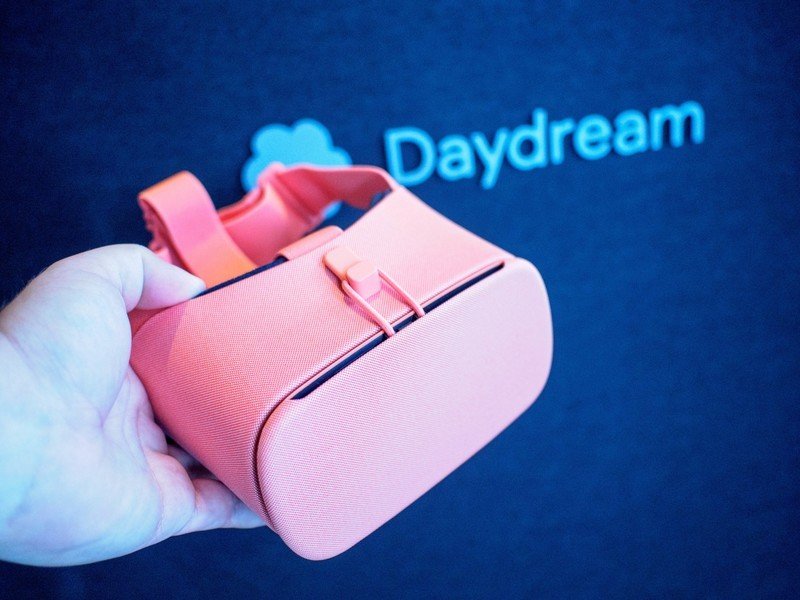
A worthy upgrade
Should you buy it? Absolutely
This year's Daydream View is an upgrade over the original in ways that will encourage people to bring VR with them and explore for hours on end. It's the next step in realizing VR as a platform for everyone, with the barrier to entry set at $99 if you already have a phone. Paired with a Pixel 2 XL, Daydream View becomes the best mobile VR platform available today, a title it is unlikely to lose anytime soon.
The only real choice you have to make here is color. Are you Team Fog, Team Carbon, or Team Coral?

